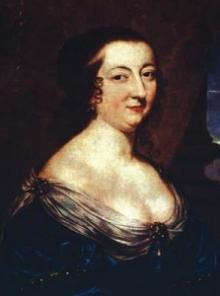Digging into a Literary Analysis of Beauty and the Beast
I see you there. I think you love Beauty and the Beast tales just as much as I do. They are fun, challenge the status quo, and scratch that inner call-of-the-wild itch we don't want to admit.
I read an interesting book that well articulated why I appreciate a Beauty and the Beast story over other selections. Why I gravitate towards a werewolf or shifter romance for an easy weekend read.
Hey you! I'm not the only one! Beauty and the Beast is a tale as old as time (see what I did there), showing up throughout the ages in various forms and myths. The oldest version is likely "Cupid and Psyche" from the second century AD. "The Woman Who Married a Snake" was another early version in Indian culture, shared orally and finally appearing in print in 500 AD (p 15). Each age and culture has it's version of Beauty and her Beast. And it turns out we love it just as much in today's culture.
In The Meanings of "Beauty & the Beast" A Handbook, Jerry Griswold discusses the various ways Beauty and the Beast, as a story and myth, shows up in current times. The heart of the story, no matter which culture is telling the tale, is similar. In modern culture, we see it reflected in movies, TV shows, books, short stories, plays, children's books, and even music videos.Think about movies such as Wolf with Jack Nicholson and Michelle Pfeiffer. Phantom of the Opera, the musical. Michael Jackson's Thriller. All share echoes of Beauty and the Beast with quasi-human characters.
And then there's the straight-forward retellings: Beauty and the Beast TV show from the late 1980s with Vincent and Catherine (/raiseshand - still a fan), Jean Cocteau's Beauty and the Beast and Disney's beloved animated version.
Beauty and the Beast Stories Highlight Common Themes
Throughout the book, Griswold highlights themes shared across Beauty and the Beast stories and provides context as to why they may resonate with us today. Three of the main themes:
- Missing Wildness (p 16, 23) - We all yearn for the lost wildness of civilized society and even the notion of a beastly lover.
- Feminine Empowerment (p 16) - Beauty separates from her family, making her own choice for the future. And, she tames the formidable Beast, changing him into a gentleman.
- Otherness (p 25) - Beauty and the Beast challenges our reactions to "otherness," specifically those not like us.
I love these concepts and relate to all three. While Disney's Beauty and the Beast is delightful and made me an insta-fan of the tale, Griswold's analysis helped me appreciate why I am drawn to Beauty and other quasi-Beauty and the Beast stories.
The Disney version artfully combines elements of many Beauty and the Beast retellings - film, book and short stories, providing an entry-point for fans, clear moral underpinnings, and a spin-off for others to continue telling Beauty and Beast's story. But more on that later.
Beauty and the Beast is "good to think with"
Griswold states, "'Beauty and the Beast,' our era has found, is good to think with." (p 26). I agree. I appreciate Griswold's book immensely and will spend time reflecting and writing about how it impacts my reaction to Beauty and the Beast retellings. It has deepened my appreciation of the story beyond that of a favorite fairy tale, and I'm encouraged to discover new elements within Beauty and the Beast and its influence across cultures.
 |
| Epcot 2018, taken by author |
One thing I'll note about Griswold's commentary - he discusses primarily Madam Jeanne-Marie le Prince de Beaumont's version of Beauty and the Beast. As you know, it's not my favorite. I prefer the longer, more dramatic tale by Madam Barbot de Villeneuve that was the first written tale named "Beauty and the Beast." While Beauty and her Beast have shown up in many stories throughout the ages before Beauty was called Beauty and her beast was a quasi-human, Madam de Villeneuve penned the first "Beauty and the Beast." And it's a mess - fairy family drama, warrior queens, TV mirror room and yes, Beauty & her silly Beast. However, I appreciate Griswold's commentary. It's insightful and worth a future post to discuss themes, Madam Beaumont's point-of-view, and thoughts from literary critics - such as the perspective of a divorced 18th century governess, oedipal complexes, and Beauty's animus. Hmmm…
I highly recommend The Meanings of "Beauty & the Beast" A Handbook. It deepened my appreciation of an already favorite tale. I'll read future Beauty and the Beast renditions with a different eye and consider those I've already read in a new light. Cheers, Mr. Griswold. I understand you are no longer with us, and am grateful that you shared your insight with us. Sincerely, RIP.
Notes
Griswold, Jerry. The Meanings of "Beauty and the Beast" A Handbook. Broadview Press Ltd., 2004
As an Amazon Associate I earn from qualifying purchases. Thanks in advance for your support!




Comments
Post a Comment